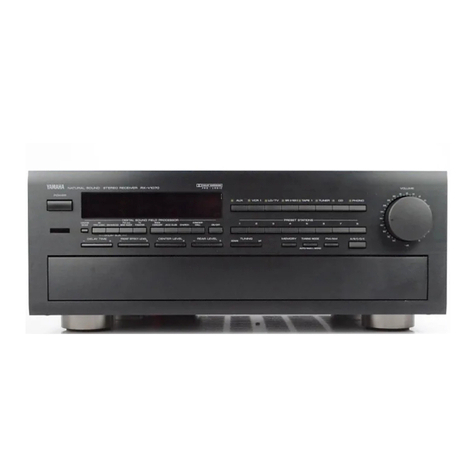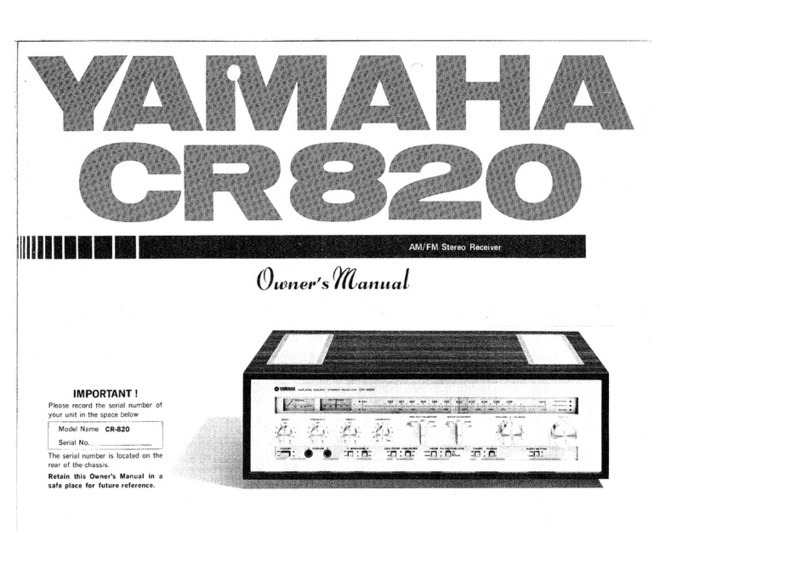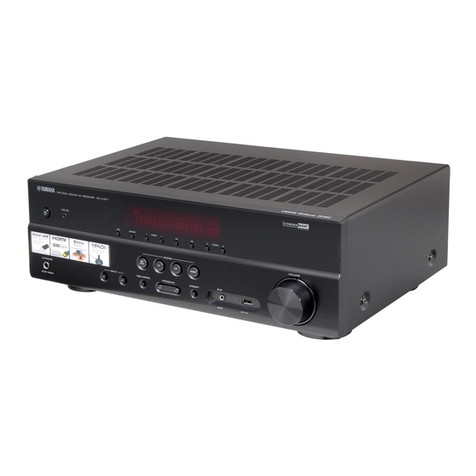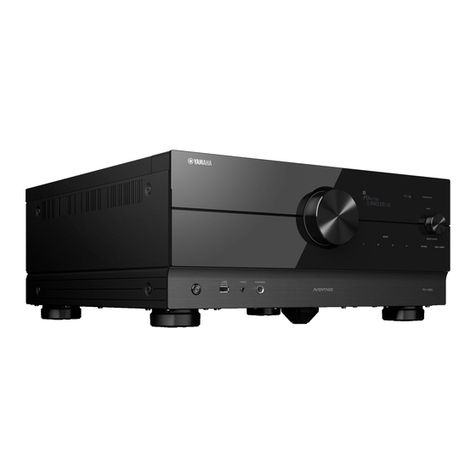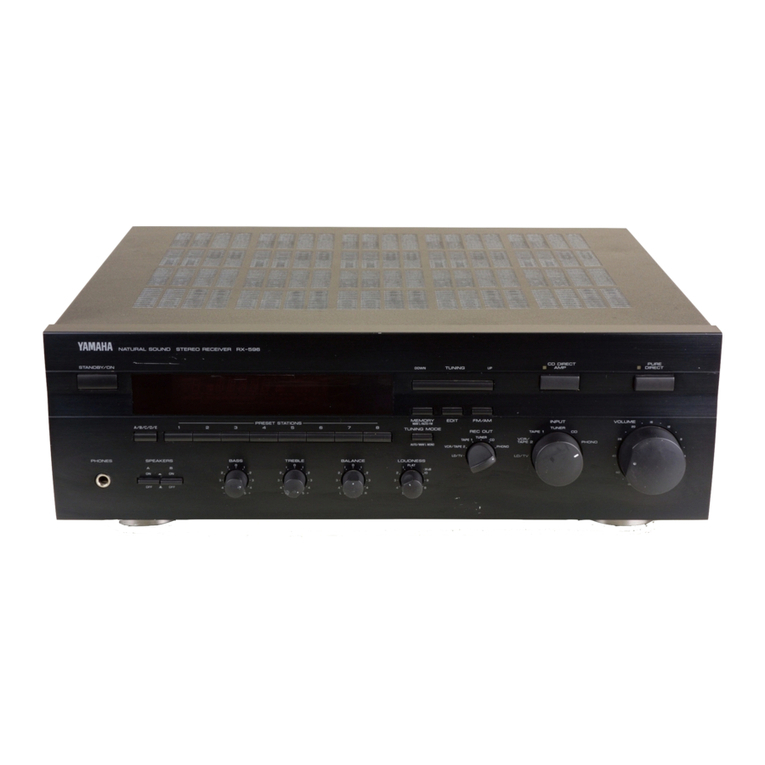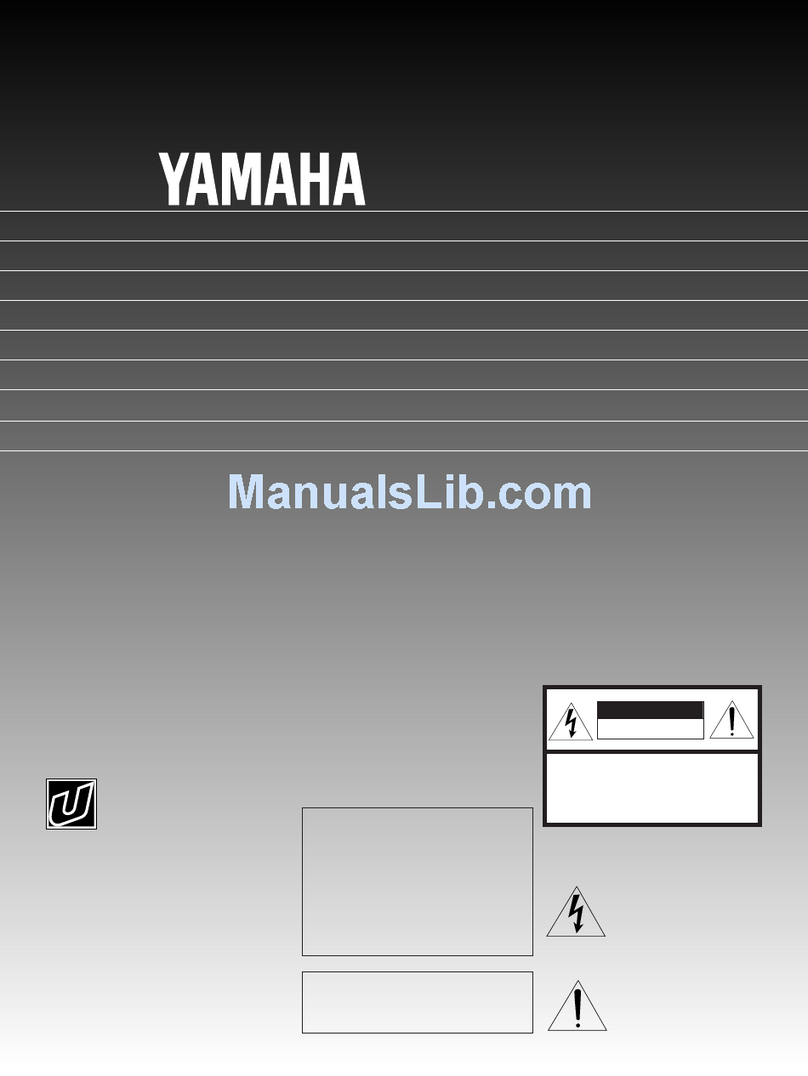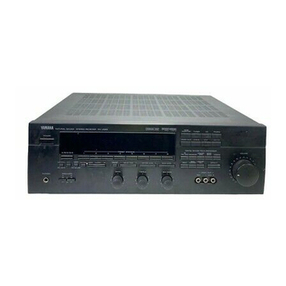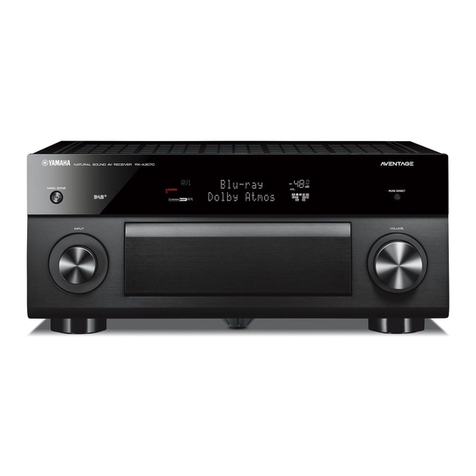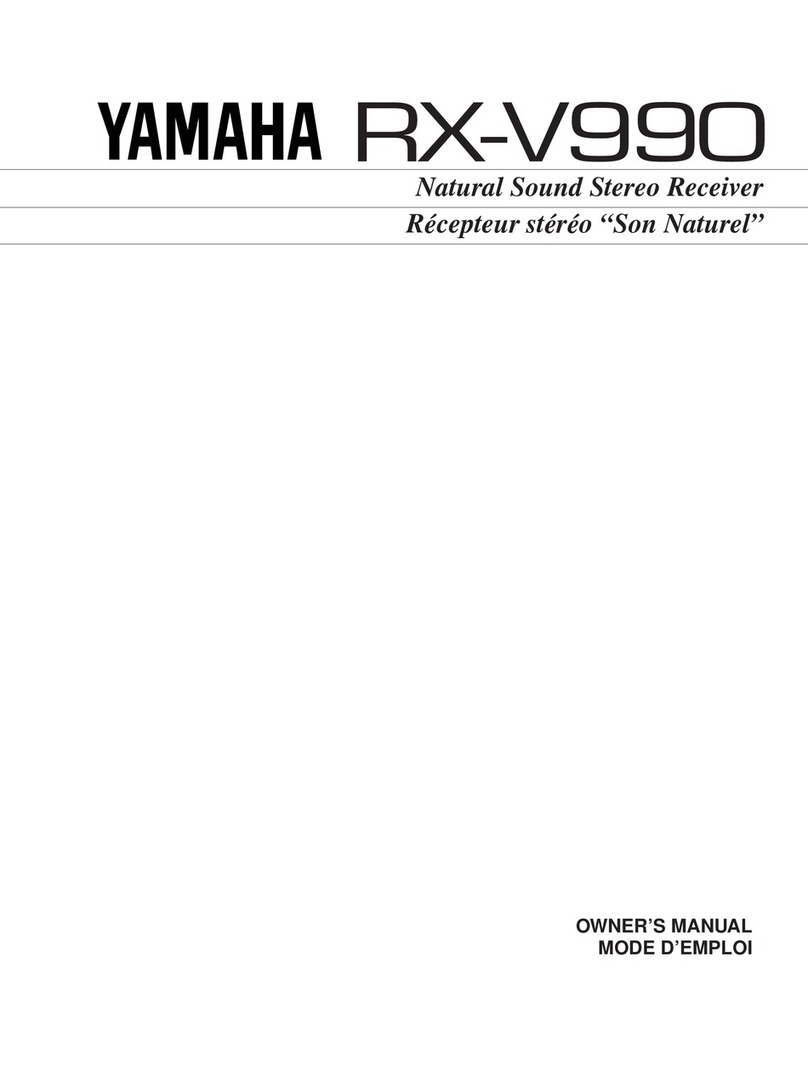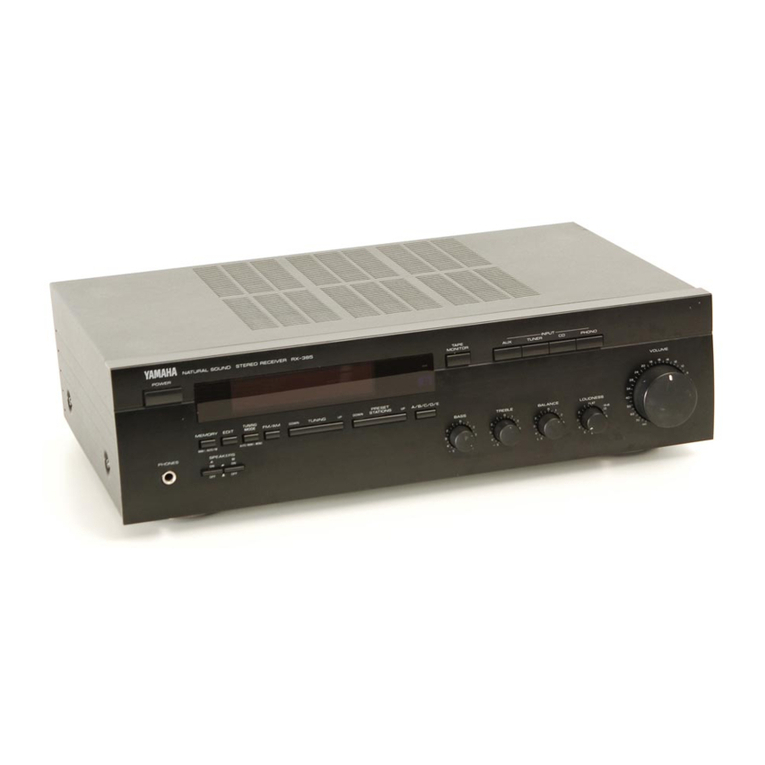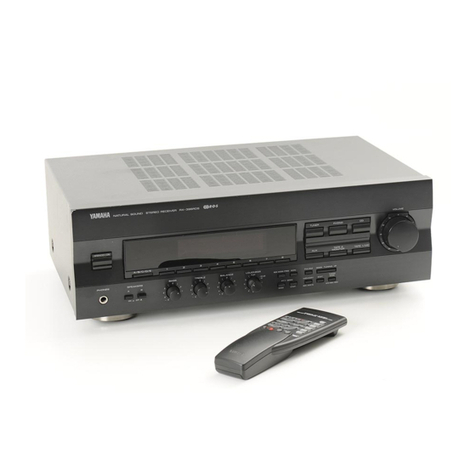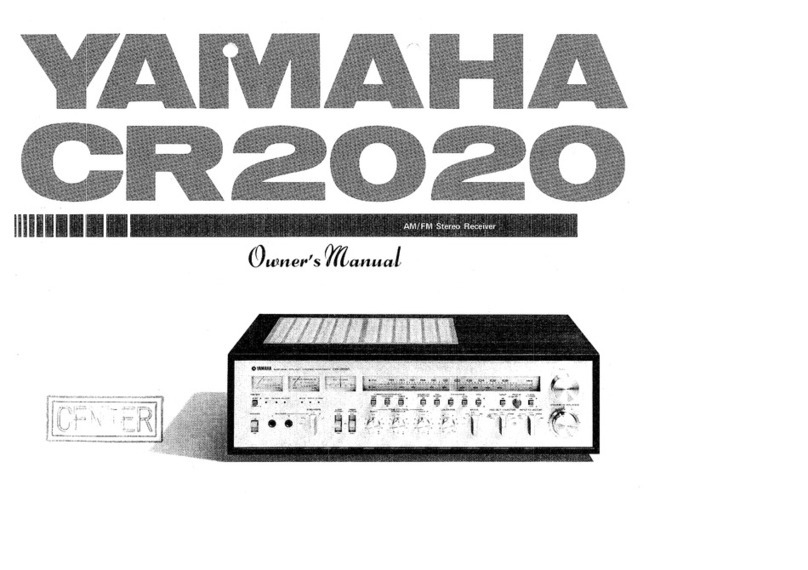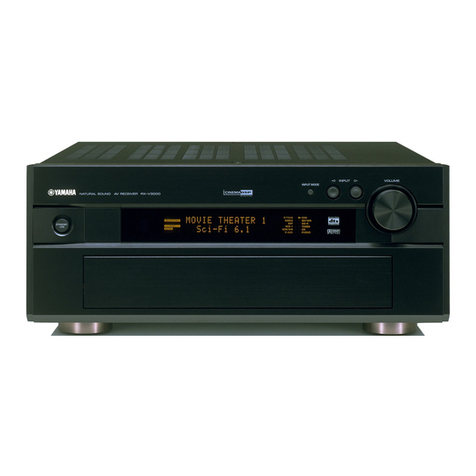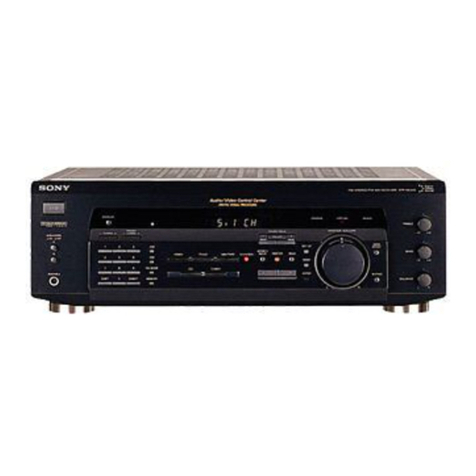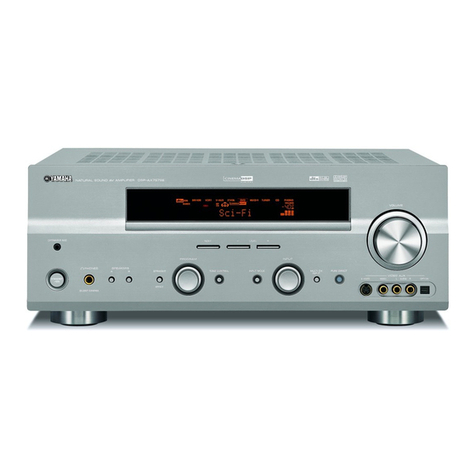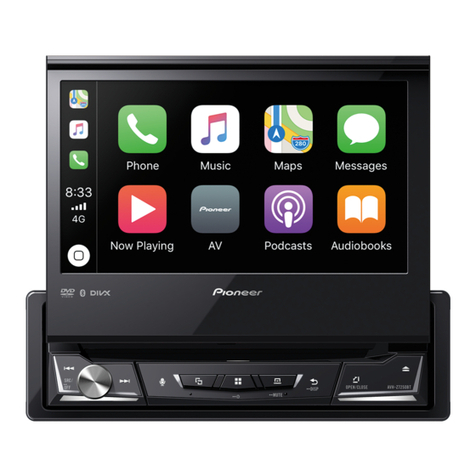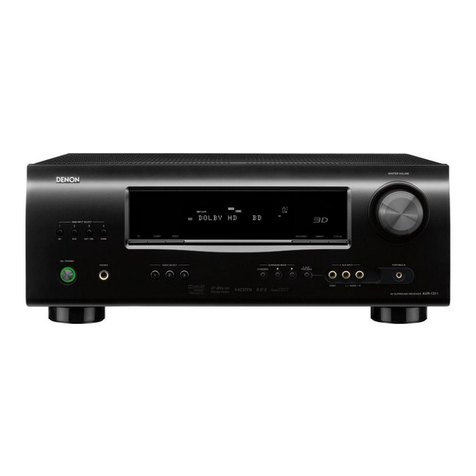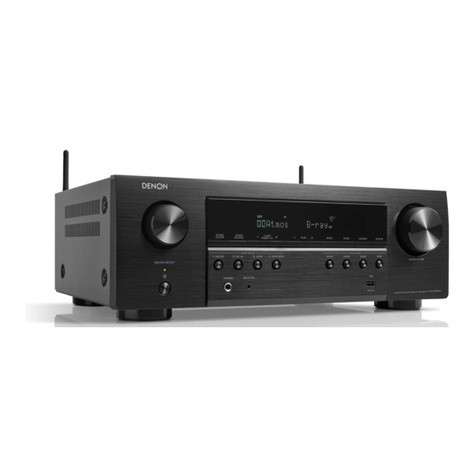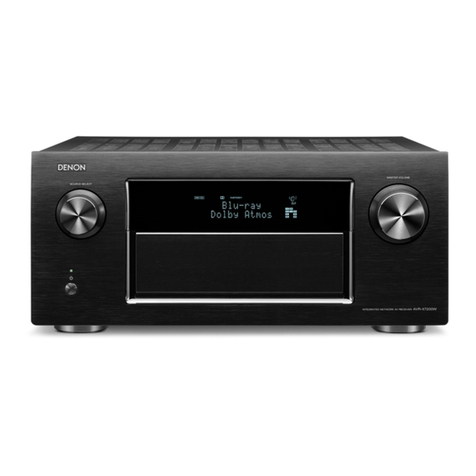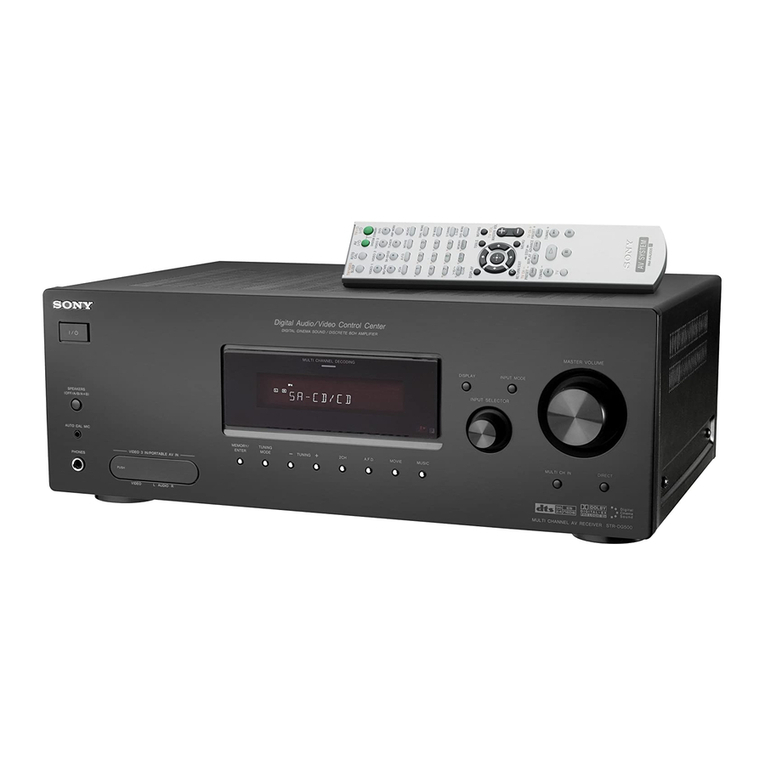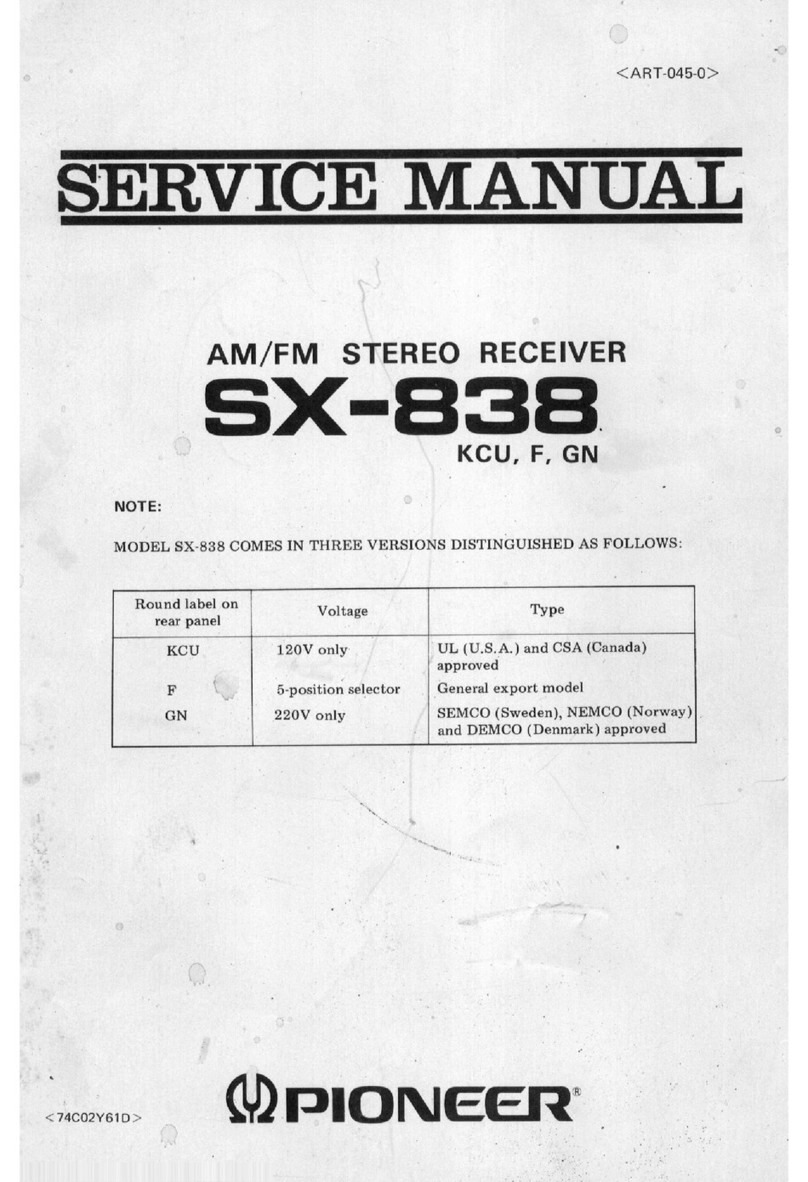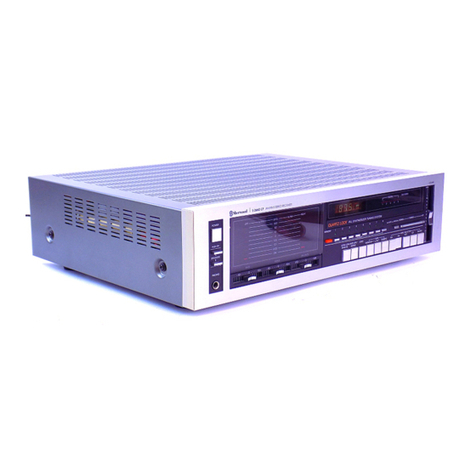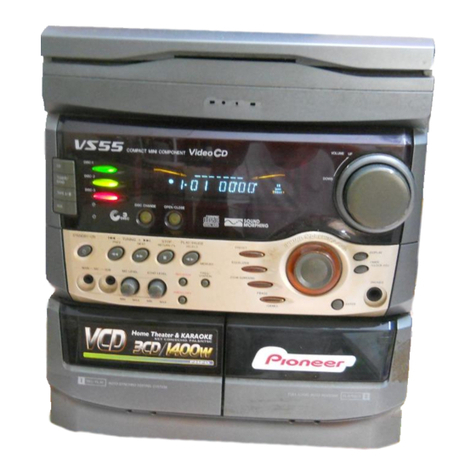6
RX-797
RX-797
■SPECIFICATIONS
AUDIO SECTION
Minimum RMS Output Power (Power Amp. Section)
L/R, 20 Hz to 20 kHz, 0.019% THD, 8 ohms
. . . .
100 W + 100 W
L/R, 20 Hz to 20 kHz, 0.03% THD, 6 ohms
. . . . .
120 W + 120 W
Dynamic Power Per Channel (IHF)
8/6/4/2 ohms . . . . . . . . . . . . . . . . . . . . . . . 140/170/220/290 W
Maximum Power Per Channel (G, E models)
1 kHz, 0.7 % THD, 4 ohms . . . . . . . . . . . . . . . . . . . . . . . . 160 W
IEC Power (G, E models)
1 kHz, 0.019% THD, 8 ohms . . . . . . . . . . . . . . . . . . . . . . 115 W
Maximum Power (EIAJ) (R, L models)
1 kHz, 10% THD, 8 ohms . . . . . . . . . . . . . . . . . . . . . . . . . 145 W
1 kHz, 10% THD, 6 ohms . . . . . . . . . . . . . . . . . . . . . . . . . 170 W
Power Band Width
L/R, 0.03% THD, 50 W, 8 ohms . . . . . . . . . . . . 10 Hz to 50 kHz
Damping Factor
20 Hz to 20 kHz, SPEAKER-A, 8 ohms . . . . . . . . . 240 or more
Input Sensitivity/Input Impedance
PHONO MM . . . . . . . . . . . . . . . . . . . . . . . . . 3.0 mV/47 k-ohms
CD, etc. . . . . . . . . . . . . . . . . . . . . . . . . . . . . 200 mV/47 k-ohms
MAIN IN . . . . . . . . . . . . . . . . . . . . . . . . . . . . . . . 1 V/30 k-ohms
Maximum Input Signal
PHONO MM, 1kHz, 0.019 % THD . . . . . . . . . . . . . . . . . .70 mV
CD, etc., 1kHz, 0.019 %THD . . . . . . . . . . . . . . . . . . . . . . 2.2 V
Output Level/Output Impedance
SUBWOOFER . . . . . . . . . . . . . . . . . . . . . . . . . . 4 V/1.2 k-ohms
PRE OUT . . . . . . . . . . . . . . . . . . . . . . . . . . . . . . 1 V/1.2 k-ohms
ZONE2 OUT . . . . . . . . . . . . . . . . . . . . . . . . . . . 1 V/1.2 k-ohms
REC OUT . . . . . . . . . . . . . . . . . . . . . . . . . . 200 mV/1.2 k-ohms
Headphone Jack Rated Output/Output Impedance
CD, etc.1 kHz, 200 mV, 8 ohms, 0.015% THD . . . . . . . . .
0.47 V/470 ohms
Frequency Response
CD, etc.20 Hz to 20 kHz . . . . . . . . . . . . . . . . . . . . . .0 ±0.5 dB
MAIN IN, 20 Hz to 20 kHz . . . . . . . . . . . . . . . . . . . . . 0 ±0.5 dB
CD, CD DIRECT AMP ON, 10 Hz to 100 kHz
. . . . . . . . . . . . .0 ±1.0 dB
RIAA Equalization Deviation
PHONO MM . . . . . . . . . . . . . . . . . . . . . . . . . . . . . . . .0 ±0.5 dB
Total Harmonic Distortion (20 Hz to 20 kHz)
PHONO MM to REC OUT (3 V) . . . . . . . . . . . . . . . .
0.008 % or less
CD, etc.to PRE OUT (1V) . . . . . . . . . . . . . . . . 0.007 % or less
CD, etc.to SP OUT (50 W/8 ohms) . . . . . . . . . 0.012 % or less
Signal to Noise Ratio (IHF-A Network)
PHONO MM (Input shorted, 5 mV) . . . . . . . . . . 87 dB or more
CD, CD DIRECT AMP ON,(Input shorted, 200mV) . . . . . .
110 dB or more
Residual Noise (IHF-A Network)
CD DIRECT AMP ON . . . . . . . . . . . . . . . . . . . . . . . . . . . 30 µV
PURE DIRECT ON . . . . . . . . . . . . . . . . . . . . . . . . . . . . 110 µV
Channel Separation
CD, etc.(Input 5.1 k-ohms shorted)
1 kHz . . . . . . . . . . . . . . . . . . . . . . . . . . . . . . 65 dB or more
10 kHz . . . . . . . . . . . . . . . . . . . . . . . . . . . . . . 50 dB or more
Tone Control Characteristics
BASS Boost/Cut (50 Hz) . . . . . . . . . . . . . +10 dB/-10 dB
Turnover Frequency . . . . . . . . . . . . . . . . . 350 Hz
TREBLE Boost/Cut (20 kHz) . . . . . . . . . . . . +10 dB/-10 dB
Turnover Frequency . . . . . . . . . . . . . . . . . 3.5 kHz
Continuous Loudness Control
Attenuation (1 kHz) . . . . . . . . . . . . . . . . . . . . . . . . . . . . -30 dB
GainTracking Error
0 to -60 dB . . . . . . . . . . . . . . . . . . . . . . . . . . . . . . . 2 dB or less
FM SECTION
Tuning Range
U, C models . . . . . . . . . . . . . . . . . . . . . . . . . 87.5 to 107.9 MHz
R, L models . . . . . . . . . . . . 87.5 to 108.0/87.50 to 108.00 MHz
A, G, E models . . . . . . . . . . . . . . . . . . . . . 87.50 to 108.00 MHz
50 dB Quieting Sensitivity (IHF)
1 kHz 100% MOD.
Mono . . . . . . . . . . . . . . . . . . . . . . . . . . . . . . 2.0 µV (17.3 dBf)
Stereo . . . . . . . . . . . . . . . . . . . . . . . . . . . . . . 25 µV (39.2 dBf)
Usable Sensitivity (IHF)
Mono . . . . . . . . . . . . . . . . . . . . . . . . . . . . . . . 1.0 µV (11.2 dBf)
Selectivity
at 400 kHz . . . . . . . . . . . . . . . . . . . . . . . . . . . . . . . . . . . . 70 dB
Signal to Noise Ratio (IHF)
Mono . . . . . . . . . . . . . . . . . . . . . . . . . . . . . . . . . . . . . . . . 76 dB
Stereo . . . . . . . . . . . . . . . . . . . . . . . . . . . . . . . . . . . . . . . 70 dB
Harmonic Distortion (1 kHz)
Mono . . . . . . . . . . . . . . . . . . . . . . . . . . . . . . . . . . . . . . . . 0.2 %
Stereo . . . . . . . . . . . . . . . . . . . . . . . . . . . . . . . . . . . . . . . 0.3 %
Stereo Separation (1 kHz) . . . . . . . . . . . . . . . . . . . . . . . . 45 dB
Frequency Response
20 Hz to 15 kHz . . . . . . . . . . . . . . . . . . . . . . . . . . . +0.5/-2.0 dB
Antenna Input . . . . . . . . . . . . . . . . . . . . . . 75 ohms unbalanced
AM SECTION
Tuning Range
U, C models . . . . . . . . . . . . . . . . . . . . . . . . . . . 530 to 1710 kHz
R, L models . . . . . . . . . . . . . . . . . 530 to 1710/531 to 1611 kHz
A, G, E models . . . . . . . . . . . . . . . . . . . . . . . . 531 to 1611 kHz
Usable Sensitivity . . . . . . . . . . . . . . . . . . . . . . . . . . . . 300 µV/m
Antenna . . . . . . . . . . . . . . . . . . . . . . . . . . . . . . . . . Loop antenna
GENERAL
Power Supply
U, C models . . . . . . . . . . . . . . . . . . . . . . . . . . AC 120 V, 60 Hz
R model . . . . . . . . . . . . . AC 110/120/220/230-240 V, 50/60 Hz
A model . . . . . . . . . . . . . . . . . . . . . . . . . . . . . AC 240 V, 50 Hz
G, E models . . . . . . . . . . . . . . . . . . . . . . . . . . AC 230 V, 50 Hz
L model . . . . . . . . . . . . . . . . . . . . AC 220/230-240 V, 50/60 Hz
Power Consumption
U, C models . . . . . . . . . . . . . . . . . . . . . . . . . . . . 260 W, 360 VA
R, A, G, E, L models . . . . . . . . . . . . . . . . . . . . . . . . . . . 260 W
Standby Power Consumption (reference) . . . . . . . . . . . . 0.1 W
Maximum Power Consumption (R model)
1 kHz, 6 ohms, 10%THD . . . . . . . . . . . . . . . . . . . . . . . 650 W
AC Outlet
2 Switched Outlet
R model . . . . . . . . . . . . . . . . . . . . . . . . . . . . 50 W Max.total
U, C, G, E, L models . . . . . . . . . . . . . . . . . . 100 W Max. total
1 Switched Outlet
A models . . . . . . . . . . . . . . . . . . . . . . . . . . . . . . . 100 W Max.
VIDEO SECTION
Video SignalType
U, C, R models . . . . . . . . . . . . . . . . . . . . . . . . . . . . . . . . . NTSC
A, G, E, L models . . . . . . . . . . . . . . . . . . . . . . . . . . . . . . . . . PAL
Video Signal Level . . . . . . . . . . . . . . . . . . . . . 1 Vp-p/75 ohms
Video Maximum Input Level . . . . . . . . . . . . . . 1.5 Vp-p or more
Video Signal to Noise Ratio . . . . . . . . . . . . . . . . 50 dB or more
Monitor Out Frequency Response . . . . 5 Hz to 10 MHz, -3 dB
